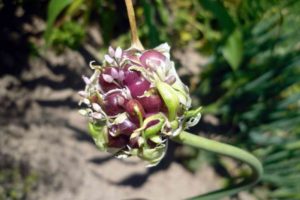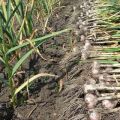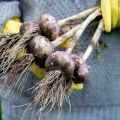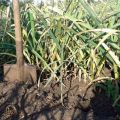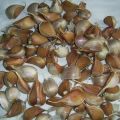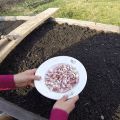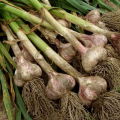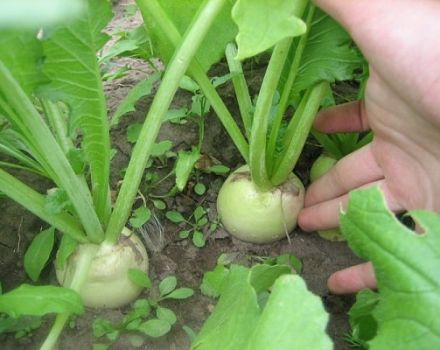When in 2020 is it better to harvest garlic in the Urals and unfavorable days, storage
What spicy vegetable is not complete without any dish? Is summer garlic. Many housewives also plant a winter species in the garden. Both need proper care, on which the yield depends. It is also important to know the timing of harvesting garlic.
Ripening dates for garlic in the Urals
Experienced gardeners, carrying out garden work, take into account not only the climatic features of the region, they are also guided by the lunar calendar. According to this, winter crops continue to ripen until the end of July. The harvest of spring garlic begins from mid-August to early September.
The ripening of the culture is influenced by the summer period. If the months are too hot, the teeth will be small. In a rainy summer, there is a chance that the crop will rot. As a rule, remove garlic from the beds, if it is a winter variety, it is possible in 3.5-4 months after germination. Spring is harvested 2-3 weeks later.
The collection period also depends on the type of vegetable. Each of them differs in the characteristics of maturation.
General signs of cultural maturity
To understand whether it is possible to remove a vegetable from the garden, you need to use the following tips:
- The appearance of the plant can indicate the maturity of the garlic head. In this case, the neck of the false stem becomes soft, and the leaves themselves wither and turn yellow.
- Some housewives inspect the husk. To do this, you need to clean the soil around the bulb. If the husk looks dense and intact, it's time to harvest.
- A ripe vegetable may have other characteristics as well. The head becomes hard, the husk peels off easily, cracks in the inflorescences.

Before collecting garlic, you need to prepare it for this. 2 weeks before harvesting, watering the beds is completely stopped. The vegetable must get rid of excess moisture in order to avoid the development of fungus while saving. Thus, a person will be able to avoid rotting crops in the ground.
If the feathers of garlic begin to turn yellow, they are tied in a knot, and the arrows are removed. A simple procedure will help direct nutrients to the root system. At the time of harvesting the crop, the green mass should not grow.
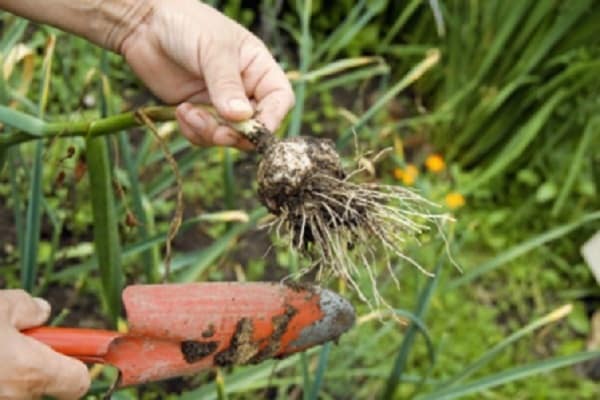
Cleaning garlic heads
Winter
When do you need to harvest garlic so that it is fully ripe and can be stored for as long as possible? The time for harvesting a vegetable, as a rule, falls at the end of July and can continue until the beginning of August. The first thing to do is make sure the vegetable is ripe and ready to harvest. The degree of maturity can be determined by the lower leaves, which begin to bend over to the soil.
Yellowing of the green mass can also serve as a signal for cleaning. The nutrients leave the leaves and go to the head.In this case, there is no need to leave the garlic in the ground. At this stage, the maturation process ends.
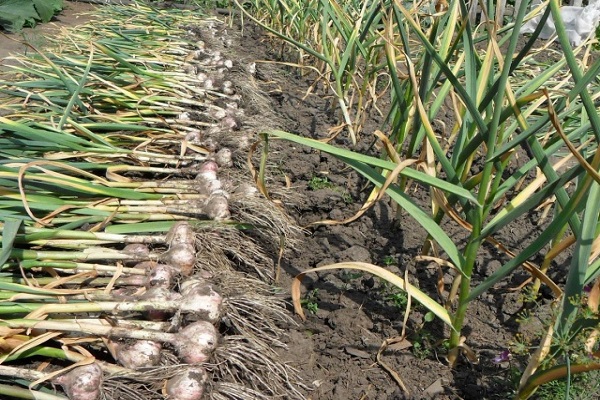
If the listed signs are not enough for a person to determine maturity, do the following. After the hostess has dug up several bulbs, they are examined. The teeth in the head should be firm to the touch and separate from each other without much effort. Winter garlic in the Urals, if ready to be harvested, allows the scales to easily move away from the head.
Harvesting of winter garlic is also done after the boll begins to open. It is located at the very end of the arrow. There is no need to wait until the bulbs in the box are completely dry. So you can skip the timing of harvesting the vegetable.
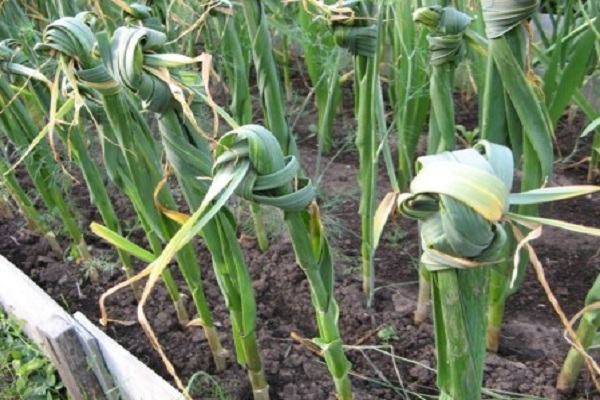
Spring
When to harvest summer garlic and how to determine ripeness? The harvesting of summer garlic in the Urals begins after the winter harvest. At least 2 weeks must pass between the dates. According to the lunar calendar, you should dig up spring garlic in August and continue until mid-September.
In the South Urals, summer garlic is planted in spring. It has a short growing season of 3 to 3.5 months. The harvesting of spring garlic may vary. Since the landing time is a key role in this. If several days have passed between crops, it's okay. The collection time can be moved to the same day.

Various factors affect the collection time:
- weather;
- variety of planting material;
- cultivation and care - watering and feeding a vegetable.
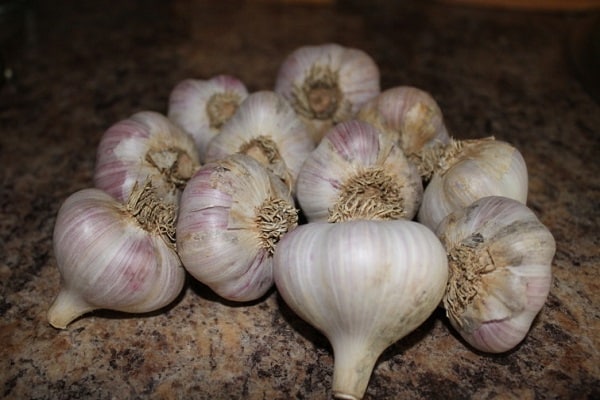
You can determine that the spring garlic is ripe in the same way as the winter one. If the leaves turn yellow, and the lower ones are completely dry, you can dig a vegetable. The head feathers become weak and sink to the ground. If you take a head of garlic in your hand and try to separate a few cloves, they should come off well, while the husk also lends itself to cleaning.
In 2020, the lunar calendar will help gardeners grow a good harvest and harvest it after it is fully ripe. If you plant, water and weed a vegetable according to the numbers indicated in the calendar, the result will delight every summer resident. Spring garlic is stored better than winter garlic. The main thing is not to miss the moment of harvesting.
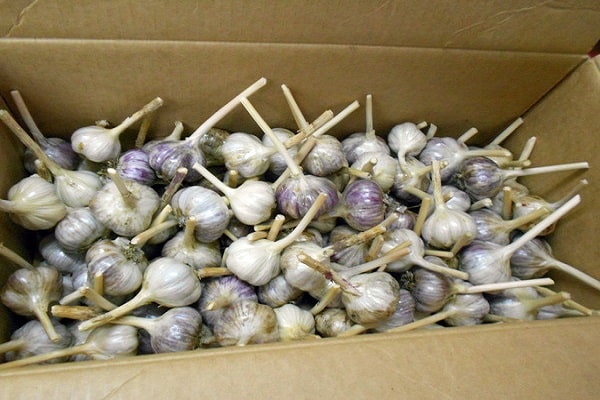
Garlic varieties
Breeders have developed special varieties especially for the Urals. They grow well in difficult weather conditions and do not require careful maintenance. The best varieties of garlic:
- "Scythian".
- "Gradekovsky".
- "Bashkir 85".
- "Sofievsky".
- Dobrynya.
- "Bogatyr".
- "Lyubasha".

"Scythian"
Refers to mid-season varieties. It can multiply by both teeth and air caps. The scales have a lilac hue, which distinguishes it from other varieties. The small onion contains many cloves with dense and spicy pulp.
The "Skif" variety, during the growing season, is able to withstand various diseases. Resistant to gray rot and bacteriosis. Do not give in to parasitic pests We plant Skif like any other variety.
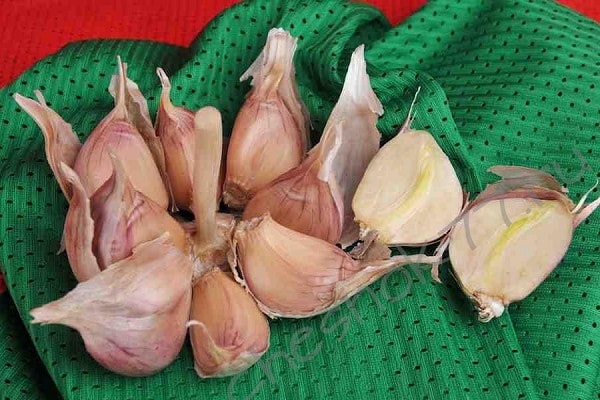
"Gradekovsky"
Planting of winter garlic "Gradekovsky" is carried out in early spring. The vegetable ripens very quickly. You can harvest the crop 2.5 months after planting. The garlic that is dug has small bulbs.
The husk is white and lilac. A clean clove also has a lilac hue. The air bulbs have a rich dark lilac color. Their shape differs from other varieties, as it is slightly oblong.
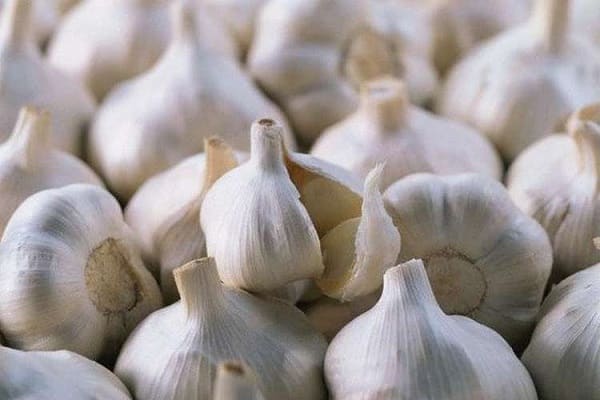
"Bashkir 85"
This variety is also considered early maturing, as it fully ripens 3 months after planting in the garden. The garlic heads themselves are small, have from 5 to 6 cloves. The pulp is firm and sharp. The harvested garlic can be stored for a long time.
Colored garlic cloves are white. In some places, the husk is covered with lilac purple stripes. The vegetable resists various pests well. The immune system protects against many diseases.
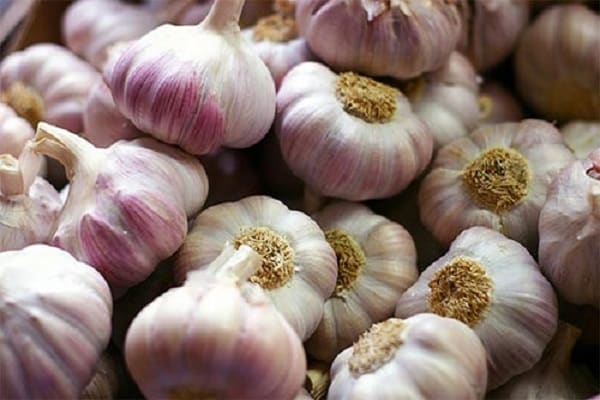
"Sofievsky"
Refers to mid-season varieties. "Sofievsky" has a round head with oblong teeth. Each onion has an average of 8-9 pieces. Growing a spicy vegetable should take place in direct sunlight. The garlic is harvested after it is fully ripe.
The crop yield is high; from one garden bed you can collect from 1 to 1.5 kg of garlic. The amount of harvested garlic is enough for the rest of autumn, winter and spring. It is appreciated by culinary experts for its excellent taste. The flesh is dense with sharp notes.
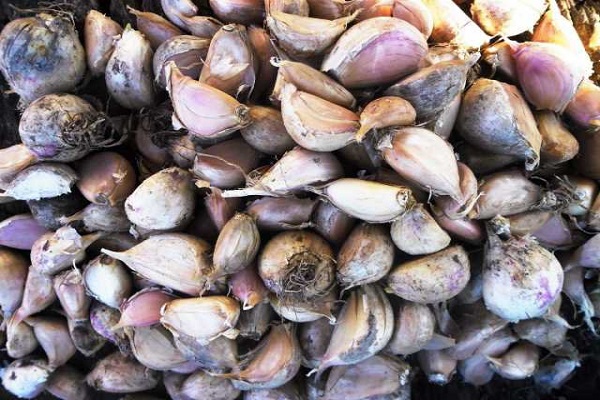
Like most winter varieties, it is white with purple veins. Planting and harvesting is very easy. The culture is easy to care for. It is resistant to many fungal diseases.
It should be remembered that hybrid varieties have an accelerated growing season. Their immune systems are better at resisting many diseases.
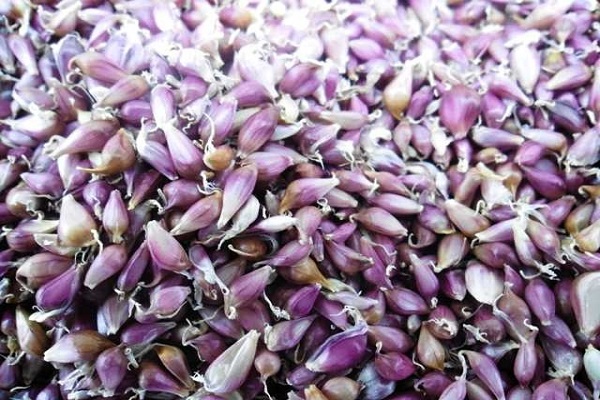
Harvesting culture
Now a person knows when to remove garlic from the garden, it remains only to study the tactics of the harvest itself. Garlic does not leave the soil as easily as onions. Therefore, in order not to injure the heads, it is better to use a shovel for digging. This is done very simply:
- Forge the heads with a pitchfork or a shovel and pull out by the tops.
- Remove the stuck soil from the dug out bulbs and put them on the garden bed.
- Do not throw each vegetable on top of each other, creating a common pile. Banging the heads can damage them. At the place of damage, as a rule, during storage, rot settles.
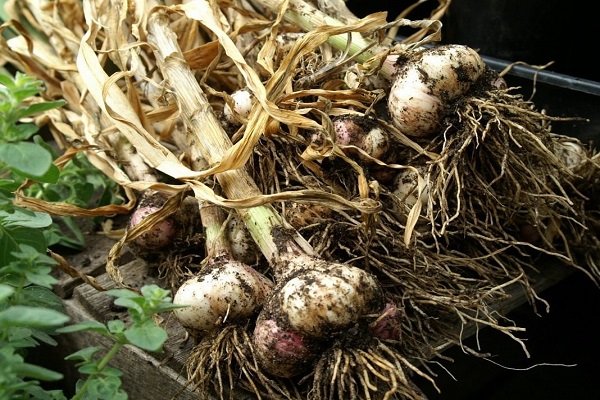
When to dig up garlic that was planted in the fall? There are varieties that overwinter in the soil and in early spring they begin their growing season. Regardless of the moment of planting, many summer residents are wondering when to harvest garlic in the Urals in 2020. Harvesting is carried out exclusively in sunny weather.
Direct sunlight destroys various bacteria that can parasitize the bulbs. In turn, this increases the shelf life of the crop. As soon as the top is completely dry, it is cut off, leaving a small neck near the bulb. The collected fruits are placed in small boxes, which must have holes.
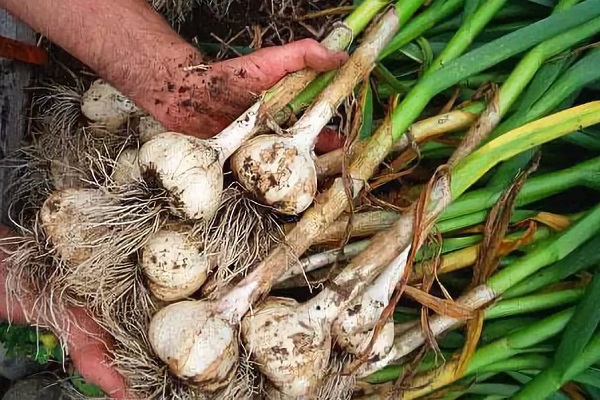
Storage preparation
The harvested crop should not be taken to the cellar immediately after digging. First, you need to spread the vegetables under a canopy. The place should be protected from direct sunlight. Better to choose one where the wind comes through. While the bulbs are weathering, in the meantime, the person can prepare the storage space itself.
If a person observes the conditions for growing a crop and knows when to pick ripe garlic, the harvest will delight with its abundance and unusual taste. This is not difficult at all. It is necessary to monitor the weather, choose suitable varieties and often look at the lunar calendar.

